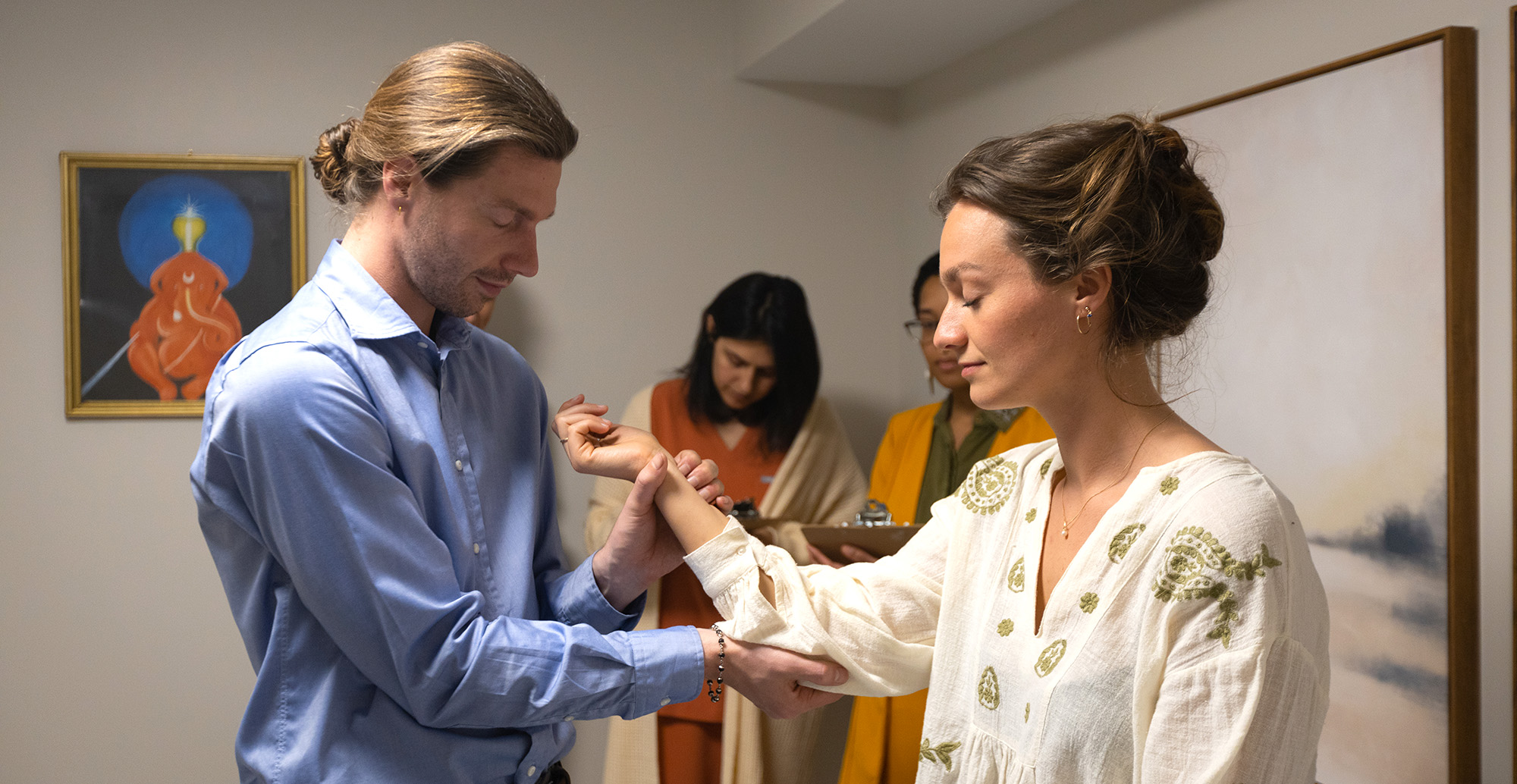

As the global interest in Ayurveda continues to grow, many turn towards this ancient vedic science to deepen their pre-existing practices or begin to take their first step working in alternative medicine. Although this new found acceptance has popularized this alternative modality, there are still many legal restrictions in the United States that healers at every level of qualification have to be aware of.
In this article we will dive into the different levels of Ayurvedic Certification, the accreditation association of Ayurveda, the legalities surrounding working in the Ayurvedic field in the United States. Before we begin to cover the different levels of education and certification, we will first cover the foundational association that created the standard for this profession, and where the qualifications process stands now.
The National Ayurvedic Medical Association ( NAMA ) was established in 1998, between four passionate people who loved Ayurveda. As this association has grown it has become recognized as the standard in Ayurveda program accreditation and certification. Now with a 12 member board of directors and thousands of members, NAMA determines the different levels of certification and qualifications an individual can receive in the Ayurvedic world, and what requirements are in place to receive them.
According to the NAMA website, many “practitioners have worked diligently with their state legislators to pass health freedom acts in 11 states… which exempt non-licensed practitioners from the violation of any licensing law related to health care services”. While the other 40 states have more strict legalities surrounding practicing Ayurveda, practitioners can practice in this non-health freedom state, but “everything you do must be in terms of providing education”. Before an individual can practice as per their individual state’s requirements, they must first pursue an Ayurvedic Education that is in alignment with their desired profession.
NAMA has contributed to “the establishment of scopes of practice, national board exams www.namacb.org for three levels of Ayurvedic professionals, as well as a council to accredit Ayurveda schools (NAMA Accreditation Council, NAMAAC)”. These three levels of Ayurvedic professionals are defined as Ayurvedic Health Coach, Ayurvedic Practitioner and Ayurvedic Doctor. Credentialing in the Ayurvedic Profession is important because it establishes a basis of evaluation for the public and professionals in the Ayurvedic community, assists employers in assessing possible employees in the Ayurvedic field and provides differentiation for ayurvedic professionals and their different levels of qualification.
According to NAMA the Ayurvedic Health Coach or Counselor level of certification identifies an entire field of “professionals versed and educated to serve the community in the area of prevention and health promotion with a focus on diet and lifestyle”. This level of Ayurvedic Education requires 4 credits of college level anatomy & physiology. Within the program itself, the students must have a minimum of 600 hours of training to complete this level of qualification.
The Ayurvedic Institute’s Ayurvedic Studies Program Level 1 is the first step in education offered, and provides the required 600 hours of training in addition to other fundamental Ayurvedic education for this certification. In addition to the anatomy & physiology prerequisites, ASP1 students will receive an incredibly thorough education covering “principles and practices of Ayurveda, diet and lifestyle, Sanskrit, Ayuryoga and client relationships. Students will also learn “the foundational theory of Ayurveda and practice assessment techniques which they will then apply in practical hands-on ways with extensive support from faculty.”
The next level of certification is the Ayurvedic Practitioner qualification. NAMA explains that this category includes a full clinical education specifically on the pathology of disease as it manifests through an Ayurvedic lense. This level of education is traditionally built upon that of the Ayurvedic Health Coach foundation, working to incorporate the diet and lifestyle certification previously received into health promotion and disease prevention.
The Ayurvedic Practitioner level does require “6 credits of college level anatomy & physiology or equivalent Contact Hours: AP applicants must undergo a minimum of 1,500 hours of training (can be inclusive of AHC graduated curriculum)”. Many individuals who enter into this level of certification have to take an entry exam to prove their proficiency. The Ayurvedic Institute’s Ayurvedic Studies Program 2 or ASP2 offers this equivalent level of education for individuals to receive certifications as an Ayurvedic Practitioner.
In this second year, students will apply their foundational knowledge learned in ASP1 to a clinical setting. In alignment with NAMA’s requirements to receive the qualification of Ayurvedic Practitioner, ASP2 students will deepen their understanding of “how imbalance develops, root cause, contributing factors, disease process and treatment”. Students will learn to build customized healing plans and protocols as well as learning hands-on therapeutics and treatments.
This final level of qualification in the professional ayurvedic field is the Ayurvedic Doctorate. This level of certification is still quite new in the Ayurvedic World, and more and more programs offering Ayurvedic Doctorates are launching each year. NAMA describes this category of education as a more specialized form of certification, where the union of Ayurvedic medicine and western allopathic medicine provide Ayurvedic Doctors with the skill and knowledge to approach each case with integrative medical skill and understanding. Prerequisites for this qualification are 6 credits of college level anatomy & physiology or equivalent Contact Hours: AD applicants must undergo a minimum of 4,000 hours of training (can be inclusive of AHC and AP graduated curriculum).
The Ayurvedic Institute has a newly founded Doctorate program which offers a unique and personalized educational experience, bringing Ayurvedic graduates from ASP1 & 2 into a high level of integrative performance and clinical knowledge. Ayurvedic Studies Program Level 3 or ASP3 provides students with the practical application and experience to truly further their Ayurvedic development. This experiential and hands-on approach encourages students to deepen their knowledge in the clinic, panchakarma setting, Ayurvedic herbal farms as well as traveling to the motherland of Ayurveda in Pune India.

The spiritual journey starts here

A native of India, he served for three years as Medical Director of the Ayurveda Hospital in Pune, India. He was Professor of Clinical Medicine at the Pune University College of Ayurvedic Medicine for 15 years. He holds a Bachelor’s of Ayurvedic Medicine and Surgery (BAM&S) degree from the University of Pune and a Master’s of Ayurvedic Science (MASc) degree from Tilak Ayurved Mahavidyalaya. The author of numerous books, Vasant Lad is respected throughout the world for his knowledge of Ayurveda.
Get regular updates from The Ayurvedic Institute, with great bonuses, free material, and discounts!
Contact